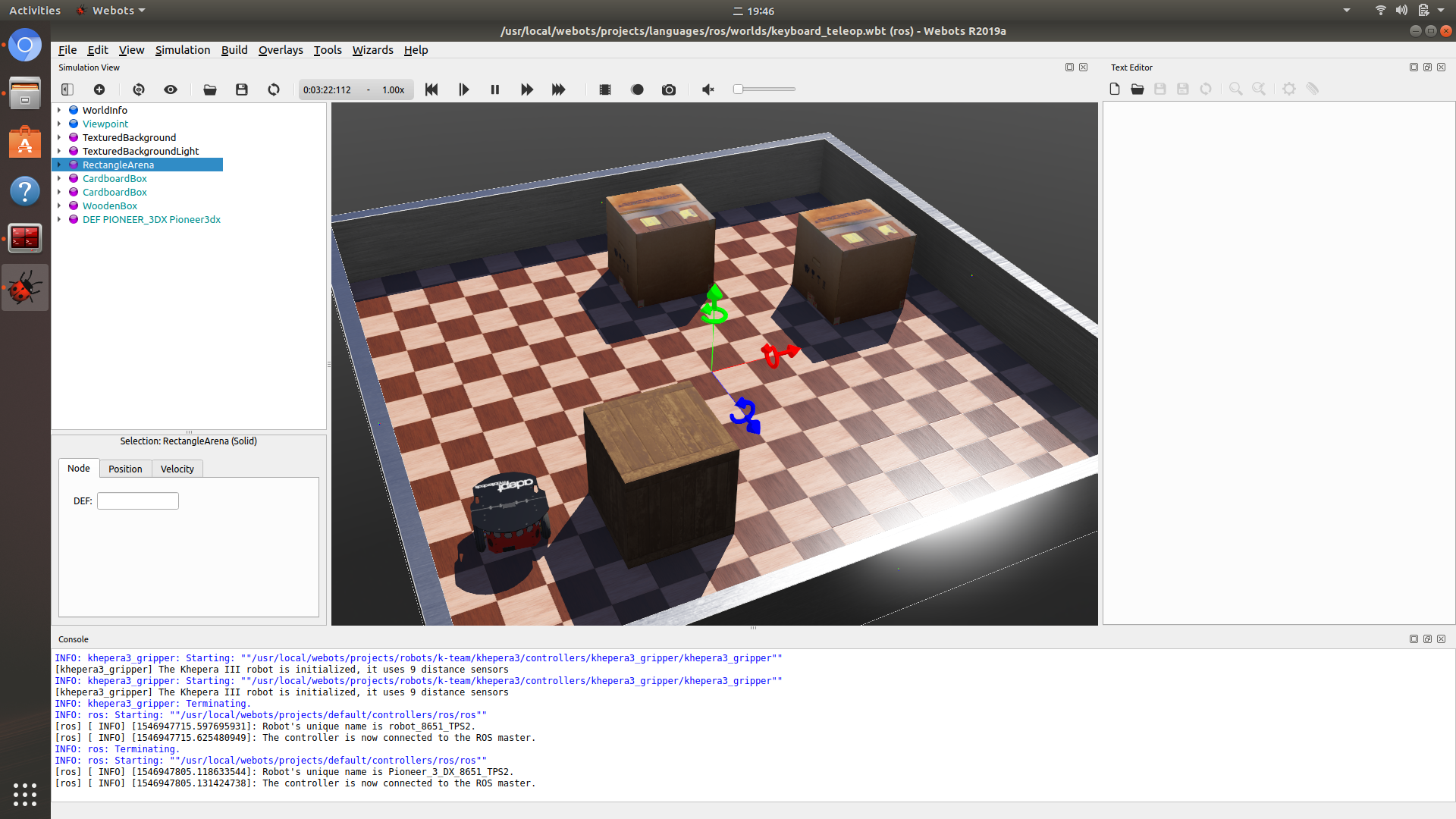
Prepare the functions and/or enumerations for exportation.ĭependencies can quickly become a nightmare when you want to export your code with Emscripten.Reduce the number of dependencies if possible.To be able to compile the code with WebAssembly, I first needed to prepare it. In the pictures below you can see the graphical evolution allowed by Wren compiled in WebAssembly. You will be able to find all the code produced during this project in this pull request from the Webots GitHub repository. To compile the C++ code to WebAssembly, I used Emscripten. Three.js works well but it has some fundamental differences with Wren and so it was really difficult to obtain the same graphical quality both in Webots desktop and on the web.Īfter a thorough analysis, we decided to invest time and port Wren to WebAssembly. Before, we were using Three.js as a rendering engine to display Webots simulations on the web. You can then see the resulting animations or streams in a browser.
#WEBOTS STEP MOVIE#
However, the public API of Wren is in C, we will see why later, but it is important.Īdditionally, Webots offers the possibility to record animations of simulations (think of a movie but where you are able to navigate the scene during the playback) or to stream simulations. Wren is written in C++ and is relying on OpenGL 3.3. To fit its need, Webots has its own rendering engine: Wren (Webots Rendering Engine).

Webots is an open-source robot simulator. In this article, I want to share challenges, solutions to problems I encountered, and the final results. I recently compiled the whole rendering engine of Webots, more than 15’000 lines of code, from C++ to WebAssembly. For example, wb_motor_set_position also cannot send data to webots immediately.Screenshot of a Webots simulation running with a WebAssembly compiled Rendering Engine. Each controller procedure calls wb_robot_step() to exchange sensor and actuator data. There are three processes in total: one is webots and the other two are robots. For example, the simulation includes connecting robots. Webots and each robot controller run in an individual process.
#WEBOTS STEP UPDATE#
Simulation delay (definition in scene tree: WorldInfo.basicTimeStep)Įach controller needs to call wb_robot_step(), otherwise the sensor and actuator will not update data and get stuck (only in synchronous mode) 3.Webots are used in two different times: control delay and analog delay. If you want to control the rotation angle of multiple motors at the same time, you need to set the expected value for the rotation angle of each motor. Similar to the actual robot, the rotation angle of the motor can not reach the expected value because the torque of the motor is not enough to resist gravity. wb_motor_set_position() only specifies the expected target value.webots/motor.h has the definition of motor speed, acceleration, force and various parameters.WbDeviceTag motor = wb_robot_get_device("my_motor") ĭouble t = 0.0 // elapsed simulation time Wb_motor_set_position() gives the corresponding position request to the motor. For motion control, the action is divided into several steps for control.The actuator is also similar to the sensor, and the label used is Wb_Device_Tag, the calling function is also wb_robot_get_device(), but there is no need to call the open function wb_*_enable().


 0 kommentar(er)
0 kommentar(er)
